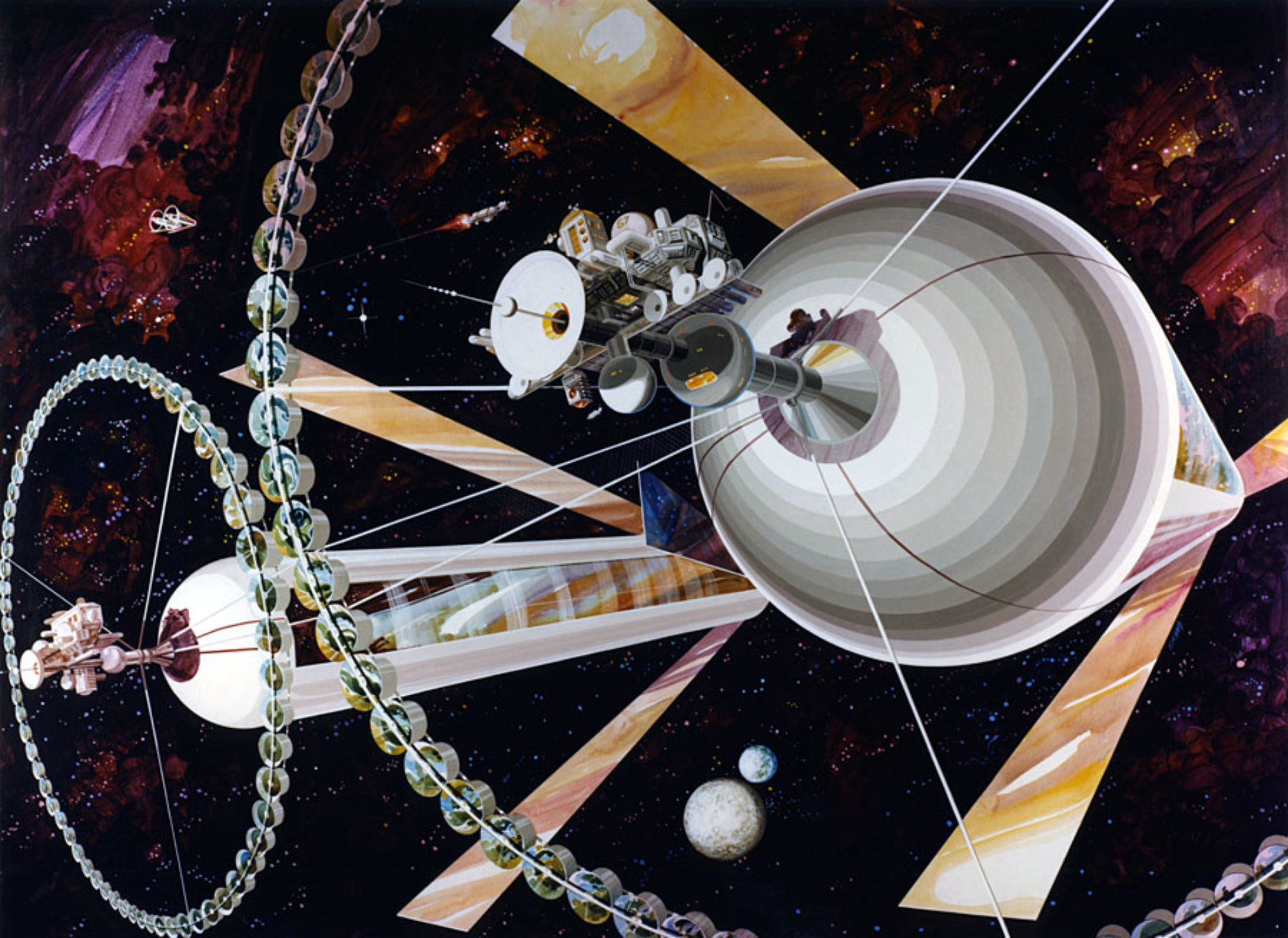
A paper by German astrophysicist Rainer Rolffs titled Rotation of Space Habitats published last October has been uploaded to the National Space Society (NSS) Space Settlement Journal. The study aims to quantify how much structural mass is required to support both the artificial gravity and the internal pressures in various designs of a rotating habitat. It expands on previous work the author completed on energy flow in such habitats, integrating considerations of cooling, energy collection (via mirrors and photovoltaics), and the distribution of interior mass.
Habitat Geometry and Design Options
Rolffs analyzes several geometric configurations, including:
– Cylinder: A habitat rotating about its central axis, with design trade-offs between compactness and rotational stability.
– Tube: A cylindrical structure rotating perpendicular to its length, featuring rounded endcaps to ensure uniform gravity.
– Oblate Spheroid: A sphere that is flattened along the rotation axis, offering a different balance between structural mass and interior volume.
– Torus: A ring-like structure where the habitat’s thickness is a fraction of the overall rotational radius.
– Dumbbell and Dumbbell with Tube: Two-sphere configurations connected either by cables or a tube; these shapes offer flexibility in managing rotational radius and gravity distribution, especially at smaller scales.
Scaling and Habitat Sizing
The analysis scales the design by considering a constant interior volume per person, leading to a range of populations from very small (few individuals) to billions. Lower limits on habitat size are determined by constraints such as acceptable rotation rates (to maintain human comfort) and the mass needed for shielding against radiation. Upper limits are set by the challenges of maintaining co-rotation of critical components like mirrors for sunlight collection and the growing demands on structural integrity and cooling systems as size increases.
Gravity Distribution and Structural Considerations
The paper provides detailed methods to compute the gravity distribution inside the habitat by dividing the interior into floors with heights that vary inversely with gravity. Rolffs examines how the structural mass must not only counteract the centrifugal forces (to create artificial gravity) but also support the self-weight of the structure, with different methods for vertical (hanging) versus horizontal (standing) support. A “critical co-rotational radius” is introduced, beyond which certain components (like non-rotating mirrors or photovoltaics) can no longer be kept in co-rotation with the habitat without incurring prohibitive mass penalties.
Trade-Offs in Mass Budget and Optimization
Not surprisingly, shielding against radiation is identified as a dominant mass component for small habitats, while for larger habitats, the structural and cooling masses become more significant. The study shows that there exists an optimum size range—between tens of thousands and tens of millions of cubic meters of interior volume—where the payload (interior mass per person) dominates the overall mass budget, and the design can be optimized for cost and functionality. Rolffs finds that different shapes yield different trade-offs; for example, the dumbbell shape is preferable at smaller sizes due to its flexible rotational radius, whereas spheroidal shapes may offer lower structural mass for very large habitats.
Detailed Derivations and Appendices
The work includes extensive mathematical derivations provided in three appendices:
– Appendix A: Details the geometric parameters and derivations for determining the rotational radius and interior volume for each habitat shape.
– Appendix B: Focuses on the gravity distribution within the habitat, explaining how the artificial gravity varies across different floors and regions.
– Appendix C: Deals with structural integrity, deriving the requirements for supporting both the artificial gravity forces and the habitat’s own self-weight, including considerations for both vertical and horizontal support systems.
Rolffs’ analysis provides design guidelines that are critical for planning future space settlements, especially in the context of reducing launch costs and using in-situ resources (e.g., processed asteroid matter) for construction. He concludes that while very large habitats are theoretically possible (even accommodating populations in the billions), practical constraints related to cooling, light distribution, and structural integrity likely favor habitats in the medium-size range with optimized shapes such as the dumbbell or oblate spheroid.
Overall, Rolffs provides an in-depth exploration of the physical and engineering challenges associated with rotating space habitats, providing both theoretical foundations and practical design criteria that could inform future developments in space settlement engineering, earning the top spot on SSP’s Artificial Gravity Section as of this post.

See David Jensen’s papers on Arxiv:
https://arxiv.org/abs/2302.12353
https://arxiv.org/abs/2408.00152
https://arxiv.org/abs/2408.00155
Thanks Gary! I covered the first of Jensen’s papers a couple of years ago: https://spacesettlementprogress.com/autonomous-conversion-of-asteroids-into-rotating-space-settlements/ but missed the other two. At least I got 1 out of 3!. I appreciate the links!